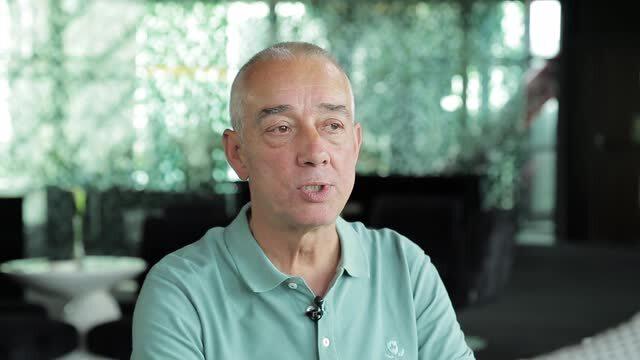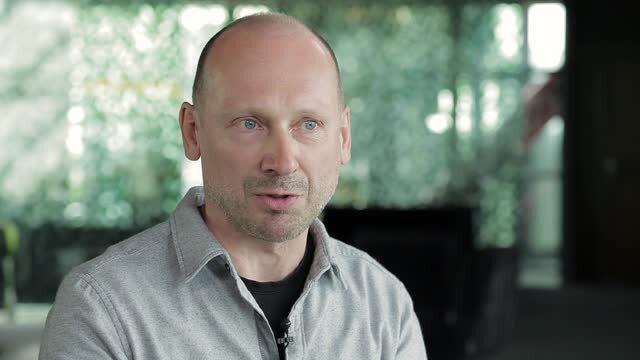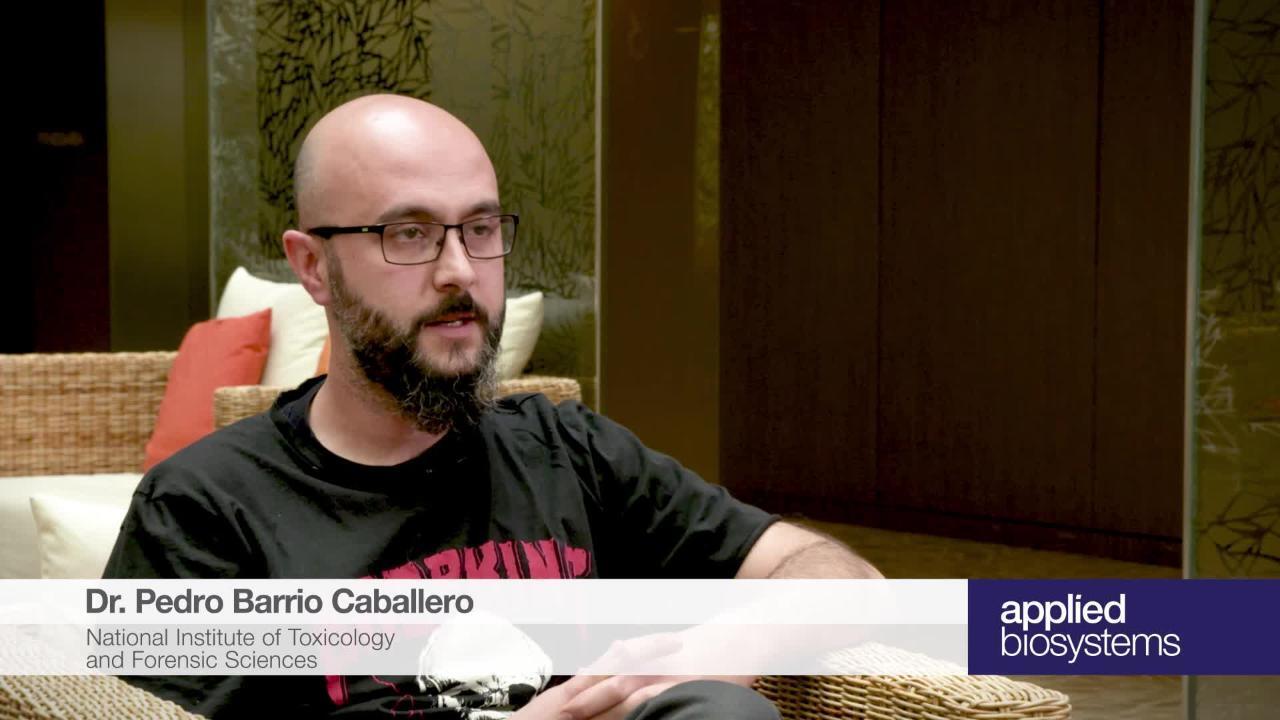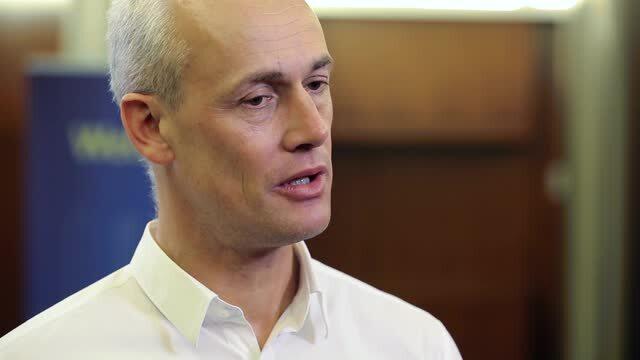Search Thermo Fisher Scientific
Forensic DNA Analysis of Challenging Samples

| It goes by a variety of names but they all conjure the same concept—a sample quantity that is below the recommended threshold in any stage of a forensic DNA analysis workflow. How can forensic scientists get a DNA profile from such a minute sample? And why would they want to? |
Back in 1997, van Oorschot and Jones reported getting a DNA “fingerprint” from an actual fingerprint. This expanded the number and types of evidence that could be interrogated as well as the types of crimes that could be investigated—theft, armed robbery and assault, to name a few.
Crime scene samples can originate from harsh environmental locations, which may result in various stages of degradation and contamination. Imagine a 20-year-old stamp that was stored away in a closet, or trace amounts of blood from an exploded IED, a partially eaten piece of pizza or evidence collected from an unflushed toilet? How would you begin to evaluate these challenging samples?
Solutions for analyzing challenging samples

Robust DNA extraction removes inhibitors and helps improve the overall yield, concentration and purity of DNA isolated from both routine and challenging samples. Advanced quantification kits deliver accurate results in less time, for even the most challenging casework samples. Both workflows are essential for improving downstream success.

DNA profiling using STRs on capillary electrophoresis instrumentation is the gold standard for human identification, in casework and missing persons investigations. Forensic laboratories need confident answers from mixed, degraded and challenging casework samples. Regional requirements for specific markers may vary, but with ongoing international data sharing efforts, STR PCR amplification kits need maximum commonality in markers to make more cross-border identifications.

With the recent advances in next-generation sequencing, crime laboratories are now able to analyze targeted and relevant forensic markers to generate investigative leads and help determine the number of contributors in a mixture analysis. The application of NGS is particularly helpful with those degraded samples that may not provide a full profile using traditional capillary electrophoresis–based methods.
Finding latent DNA from crime scene samples
Forensic casework laboratories are faced with the challenge of recovering very limited amounts of DNA from crime scene samples. Adrian Linacre, PhD, from Flinders University discusses new techniques to detect and analyze trace evidence.

Forensic samples are among the most difficult specimens to process because they are often limited in quantity, may be environmentally exposed, and may be present on substrates containing PCR inhibitors. The quantity and quality of genomic DNA extracted and purified from a forensic sample are directly correlated to the success of downstream analysis.

The Applied Biosystems AutoMate Express Forensic DNA Extraction System is an easy-to-use, robust benchtop instrument that offers maximum flexibility and utilizes the Applied Biosystems PrepFiler Express and PrepFiler Express BTA (bone, tooth and adhesive) chemistries packaged in prefilled, foil-sealed cartridges. The ease of instrument setup, minimal handling of sample tubes, and short run time make the AutoMate Express system an ideal instrument for analysts to quickly perform unscheduled extractions for expedited cases. More importantly, the AutoMate Express system offers the greatest range of elution volumes (from 20 µl to 250 µl) and maximizes the ability to obtain interpretable STR results.

The PrepFiler Express kits use a specially formulated wash solution developed to maximize the removal of common PCR inhibitors found in forensic samples while minimizing any loss of DNA during the purification steps. This enables clean, balanced DNA profiles to be generated that are easy to interpret. Specifically, the PrepFiler Express BTA kits were designed for challenging samples such as bones, teeth and adhesive base samples, including cigarette butts and tape lifts. PrepFiler Express and PrepFiler Express BTA kits on the AutoMate Express instrument have been tested and optimized to work with our latest Applied Biosystems quantification kits (Quantifiler Trio and Quantifiler HP kits) and STR kits (GlobalFiler kit, NGM Detect, and Yfiler Plus PCR Amplification Kits) to maximize downstream performance.
The quantification step of the casework workflow is the key to determining how a sample will be processed downstream. There are many factors that determine the success of the short tandem repeat (STR) profile. Our advanced quantification instrumentation, kits and software enable forensics labs to achieve accurate results in less time for even the most challenging casework samples. The value of DNA quantification includes:
- Improves amplification efficiency
- Results in fewer off-scale, over-amplified, or under-amplified samples
- Gives normalized profiles, resulting in reliable data interpretation
- Designed to reduce the need for downstream reanalysis, which enables long-term cost savings
- Provides key sample information to enable forensic workflow decisions
- Enables conservation of sample through targeted downstream assay decisions
The Applied Biosystems Quantifiler HP and Quantifiler Trio DNA Quantification Kits enable forensics laboratories to simultaneously obtain a quantitative and qualitative assessment of total human DNA in a single, highly sensitive real-time PCR reaction.

Applied Biosystems HID Real-Time PCR Analysis Software v1.3 provides the ability to analyze the data with a virtual standard curve that is user defined. In addition, the software includes the quantification, STR setup features, and STR data quality review functionality that integrate and streamline the quantification and STR analysis steps.
As global forensic DNA databases rapidly expand, so does the need for more discriminating STR multiplexes that can maximize loci overlap. That’s why Applied Biosystems GlobalFiler STR kits incorporate the most commonly used loci—all in a single multiplex reaction. GlobalFiler kits contain all of the STR loci commonly used in major global databases, including all markers recommended for inclusion by the CODIS Core Loci Working Group and those markers commonly used in Europe. The multiplex selection of markers reduces the risk of adventitious matches while enabling more effective cross-border data sharing.
The GlobalFiler kit has been optimized to maximize the quality and quantity of genotyping results, even with the most challenging samples. The robust master mix, 10 mini-STR markers, and expanded DNA input range generate more information from the most difficult samples—those that are highly degraded and/or inhibited.
The GlobalFiler kit is also available with an Internal Quality Control system, or IQC, as part of a fully integrated and validated forensic workflow. The IQC system consists of two synthetic sequences with specific primers for each of the targets (IQCS and IQCL) and provides positive confirmation of sample amplification, but also indicates adverse conditions with compromised amplification, such as the presence of PCR inhibitors. The IQC system, also used in our VeriFiler Plus and NGM Detect kits, provides additional confidence in genotyping results, and helps users distinguish between inhibited and degraded DNA samples.
The Applied Biosystems NGM Detect PCR Amplification Kit helps minimize the size of highly discriminating markers, such as SE33. Designed specifically for compatibility with European database requirements, this kit offers superior sensitivity and provides an alternate configuration to the well-established NGM SElect PCR Amplification Kit format, to help maximize information recovery even from degraded casework samples. The NGM Detect kit helps to enable positioning of markers with the highest representation in databases to be prioritized, to enhance recovery of searchable information from casework samples. An improved master mix formulation coupled with a capacity for higher sample volume in the reaction (15 μL vs. 10 μL DNA) helps to enable high recovery of allelic data.
Y-STR loci can be valuable in forensic investigations because the Y chromosome can be used to trace male lineages due to its unique genetic inheritance from father to sons. Y-STR loci have been serving as a supplementary tool for relationship testing, ancestry identification, familial searching, missing persons and mass disaster victim identification, and especially sexual assault cases to exclude the potential male contributors or further confirm the identity.
Forensic casework, missing persons and mass disaster victim identification in particular pose significant challenges to the analyst in terms of sample quality and quantity. The Applied Biosystems Yfiler Plus kit can get more information with its 27 Y-STR markers, including 7 rapidly mutating Y-STR loci and 11 mini-STR (<220bp), from low quantity or low quality casework samples with its high sensitivity and improved inhibitor resistance.
For analyzing DNA mixtures, the Applied Biosystems Precision ID GlobalFiler NGS STR Panel v2 includes the same 21 autosomal STRs along with Y markers and amelogenin sex markers found in the GlobalFiler PCR Amplification Kit. Instead of using SE-33, this panel includes additional multi-allelic STR markers to aid in mixture resolution for complex casework samples. Using a small sample input of as little as 125 pg of DNA with this targeted forensic marker panel helps to enable you to go from sample extraction to genotyping in less than 2 days. The Precision ID GlobalFiler NGS STR solution provides information about STR allele calls, STR sequence motifs, known SNPs in flanking regions, and isometric heterozygotes (alleles of the same fragment length but containing different sequences).
Generate more investigative leads with the Applied Biosystems Precision ID Ancestry Panel, which includes 165 autosomal markers (SNPs) that can provide you with biogeographic ancestry information and guide your investigative process. With small amplicon sizes (<130 bp), this panel is also optimized for degraded DNA samples. Using a small sample input of as little as 1 ng of DNA, you can go from sample extraction to genotyping in a little over a day.
Analyze degraded or trace DNA with the Applied Biosystems Precision ID Identity Panel, comprised of 124 markers and providing discrimination of individuals similar to STR genotype match probabilities used by forensic analysts. This high discrimination power is achieved by using 34 upper Y-clade SNPs and 90 autosomal SNPs. Due to the shorter amplicons required for sequencing, SNPs enable high recovery of information from challenging samples such as samples from mass disasters, low–copy number samples, or low-quality samples.
Analyze evidence from missing persons or remains from disaster victims with the Applied Biosystems Precision ID mtDNA Whole Genome Panel, an innovative approach to mtDNA sequencing specifically developed for forensic applications. This mtDNA tiling approach includes two primer pools of 81 small amplicons in each pool, with an average size of 163 bp, to assist with obtaining optimal mitochondrial genome coverage data from highly compromised, degraded samples such as hair shafts, teeth and bones.
Additionally, the Applied Biosystems Precision ID mtDNA Control Region Panel is based on the same mtDNA tiling approach used in the Precision ID mtDNA Whole Genome Panel. This targeted control region panel contains two smaller sets of primer pools with 7 amplicons in each pool that span the 1.2-kb control region, which encompasses hypervariable (HV) regions I, II and III, with the same optimal coverage for degraded forensic samples.
Extraction
- Fujii K et al. (2013) A comparison of DNA extraction using AutoMate Express and EZ1 advanced XL from liquid blood, bloodstains, and semen stains. J Forensic Sci 58(4):981–8.
- Liu JY et al. (2012) AutoMate Express forensic DNA extraction system for the extraction of genomic DNA from biological samples. J Forensic Sci 57(4):1022–30.
Quantification
- Holt A et al. (2016) Developmental validation of the Quantifiler HP and Trio Kits for human DNA quantification in forensic samples. Forensic Sci Int Genet 21:145–57.
- Vernarecci S et al. (2015) Quantifiler Trio Kit and forensic samples management: A matter of degradation. Forensic Sci Int Genet 16:77–85.
Autosomal STR kits
- Lin SW et al. (2017) A selection guide for the new generation 6-dye DNA profiling systems. Forensic Sci Int Genet 30:34–42.
- Wheeler A et al. (2017) Comparison of DNA yield and STR success rates from different tissues in embalmed bodies. Int J Legal Med 131(1):61–66.
Y-STR kits
- Ambers A et al. (2014) Autosomal and Y-STR analysis of degraded DNA from the 120-year-old skeletal remains of Ezekiel Harper. Forensic Sci Int Genet 9:33–41.
- Liu H et al. (2016) A convenient guideline to determine if two Y‐STR profiles are from the same lineage. Electrophoresis 37(12):1659–68.
NGS
- Tasker E et al. (2017) Analysis of DNA from post-blast pipe bomb fragments for identification and determination of ancestry. Forensic Sci Int Genet 28:195–202.
- Hollard C et al. (2017) Case report: on the use of the HID-Ion AmpliSeq Ancestry Panel in a real forensic case. Int J Legal Med 131(2):351–358.
- HPS validation services
- Training
- Email North American Technical Support
- Call: 1-888-821-4HID (4443), select Option #1
Share your interesting cases with us at HID.info@thermofisher.com
For Research Forensic or Paternity Use Only. Not for use in diagnostic procedures. For licensing and limited use restrictions visit thermofisher.com/HIDlicensing







